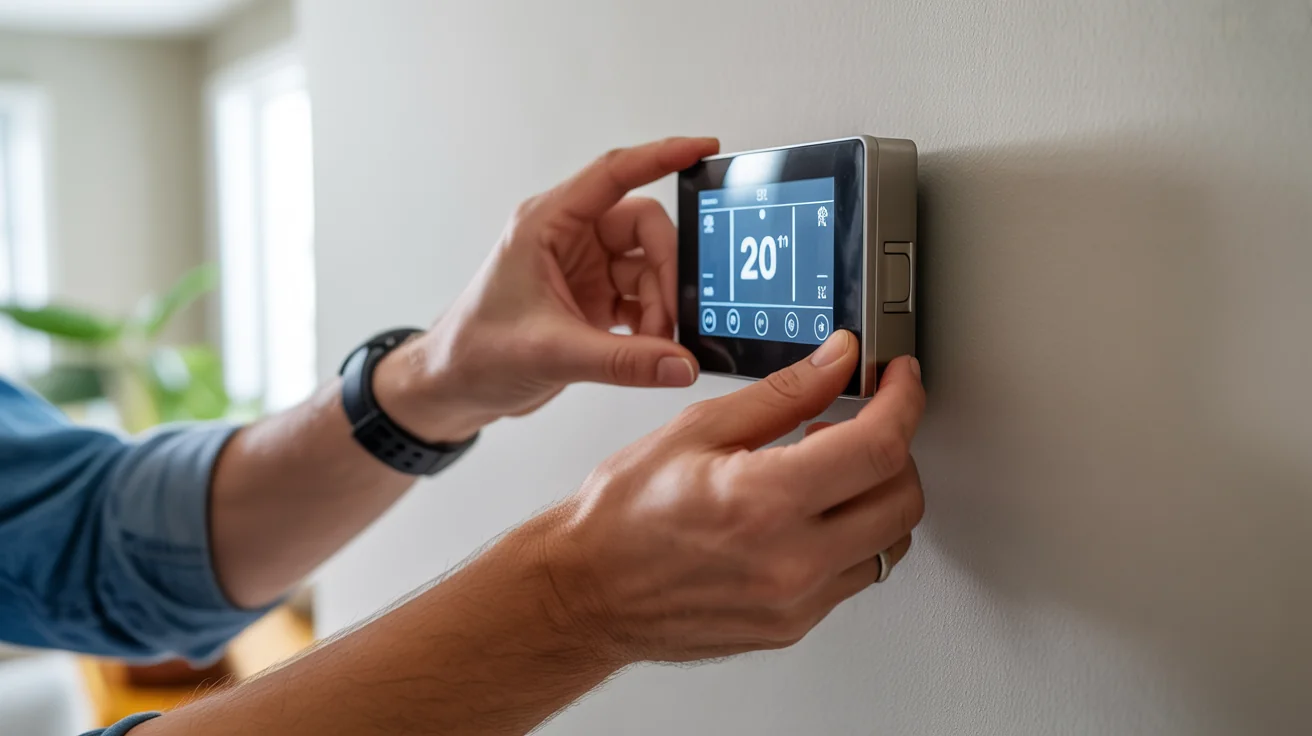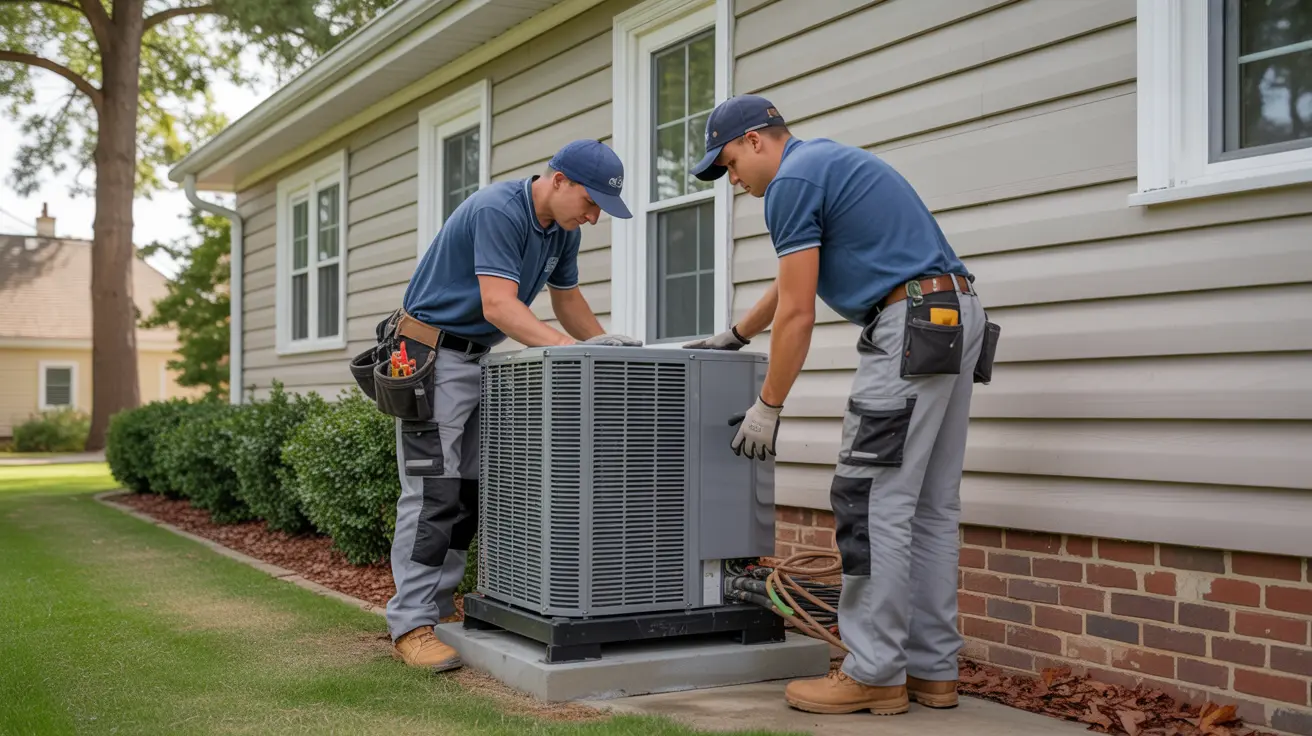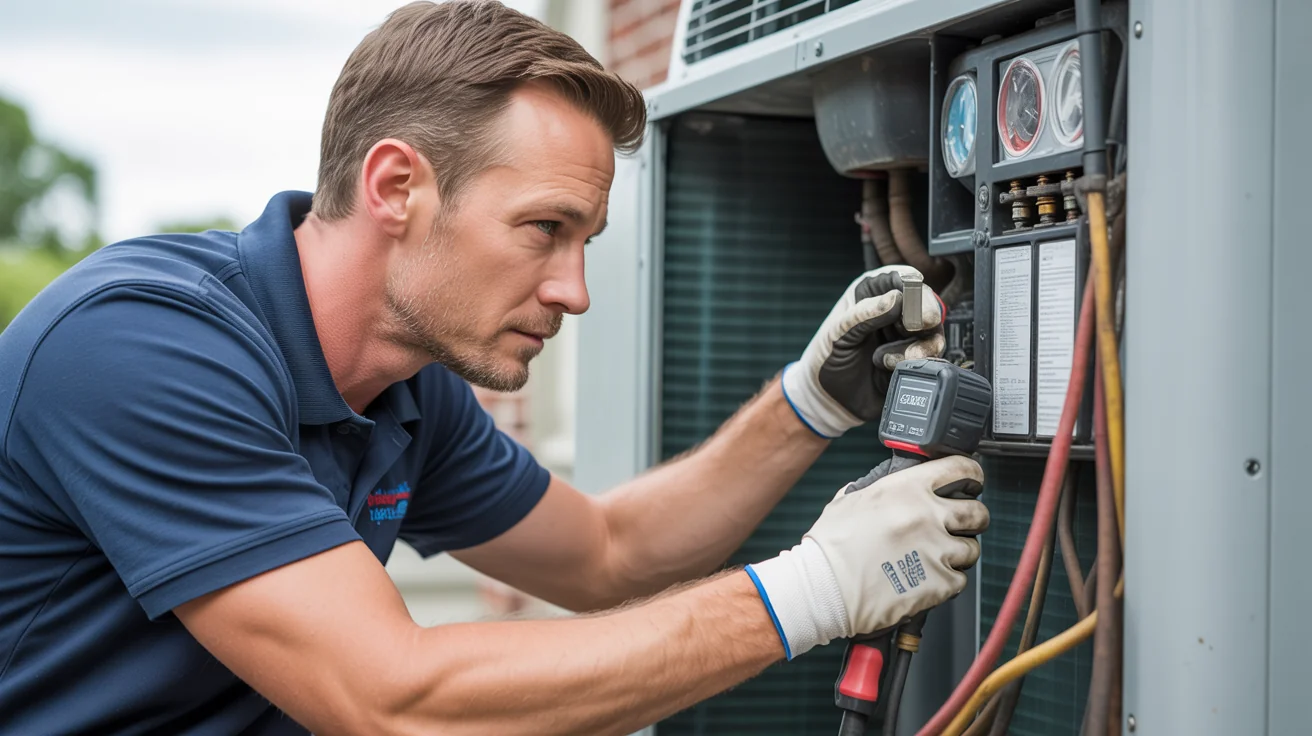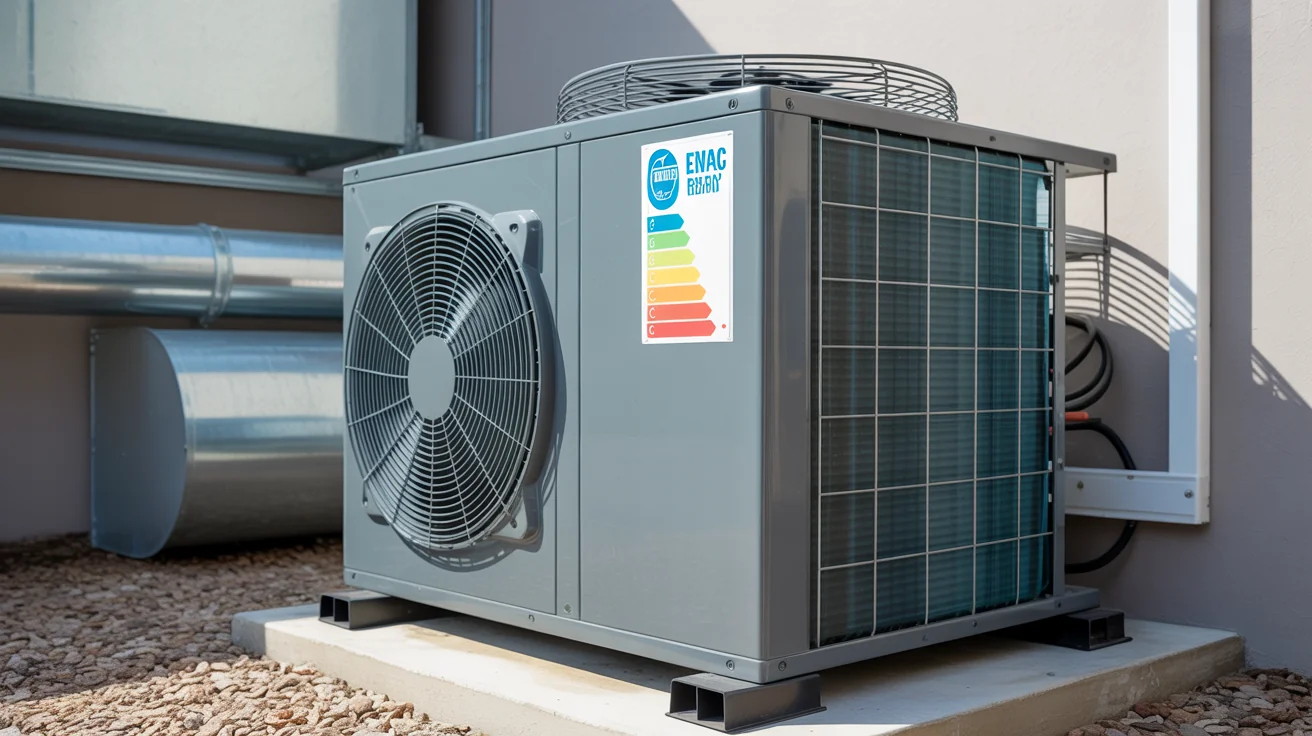HVAC Control Systems Integration: Smart Building Solutions for North Texas
Advanced guide to HVAC control systems integration and smart building automation for North Texas. Professional set upation of intelligent controls for optimal performance and efficiency.

- The Evolution of HVAC Control Systems
- North Texas Control System Requirements
- Advanced Control System Technologies
- Smart Building Integration Technologies
- Energy Management and Optimization
- Implementation and Integration Procedures
- Regional Integration Considerations
- Cost-Benefit Analysis and ROI
+ 5 more sections below...
- The Evolution of HVAC Control Systems
- North Texas Control System Requirements
- Advanced Control System Technologies
- Smart Building Integration Technologies
- Energy Management and Optimization
- Implementation and Integration Procedures
- Regional Integration Considerations
- Cost-Benefit Analysis and ROI
+ 5 more sections below...
The Evolution of HVAC Control Systems
Modern HVAC control systems have evolved from simple thermostats to sophisticated building automation platforms that integrate multiple systems, improve performance, and provide intelligent responses to changing conditions. In North Texas, where extreme weather demands reliable, efficient operation, advanced control systems become essential for optimal performance and cost management.
Last week, I helped a Plano office building integrate their aging HVAC system with modern building automation controls. Before integration, they were spending $4,200 monthly on energy bills and dealing with constant comfort complaints. After three days of control system integration, their energy costs dropped to $2,800 monthly while employee comfort improved dramatically. The system now automatically adjusts to occupancy patterns, weather conditions, and utility rates. What seemed like expensive old equipment transformed into an intelligent, efficient system through smart control integration.
This complete guide explores professional control system integration, smart building technologies, and set upation strategies specifically designed for North Texas conditions and needs.
North Texas Control System Requirements
North Texas HVAC systems face unique control challenges that make intelligent integration essential. Extreme load variations occur when outdoor temperatures swing from 40 degrees to 80 degrees in a single day, requiring controls that can rapidly adjust system operation. Peak demand management becomes critical during our brutal summer months when utility demand charges can represent 40% of electric bills. Weather adaptation allows systems to pre-condition buildings before temperature changes and optimize operation based on forecast conditions. Multi-zone complexity in commercial buildings requires coordinating dozens of zones with different occupancy patterns and thermal loads. Emergency response capabilities automatically protect equipment and occupants during power outages, storms, and extreme weather events.
Control system integration complexity varies dramatically based on existing infrastructure and integration goals. Legacy system integration often requires creative solutions to connect modern controls with older equipment that wasn’t designed for automation. Multi-vendor compatibility challenges arise when buildings contain equipment from various manufacturers using different communication protocols. Network reliability becomes critical in harsh environments where temperature extremes and electrical interference can disrupt communication. Scalability planning ensures systems can grow with building modifications and technology advances without complete replacement.
Advanced Control System Technologies
Building Automation System (BAS) Integration
Comprehensive Building Automation:
1. Central Control Platform Building automation system integration creates a centralized intelligence that manages all building systems efficiently. The central processing unit uses advanced algorithms to optimize operation based on multiple variables including weather, occupancy, energy rates, and equipment condition. Distributed control panels throughout the building provide local intelligence while maintaining communication with the central system. Network communication infrastructure ensures reliable data flow between all components. User interfaces provide intuitive control and monitoring capabilities for building operators. Data storage and analytics platforms track performance trends and identify optimization opportunities. Remote access and mobile integration allow building management from anywhere while providing instant alerts about system status.
2. System Integration Capabilities Modern building automation provides comprehensive integration capabilities including complete heating, cooling, and ventilation control for all HVAC systems. Energy management features enable demand monitoring, load shedding, and continuous optimization. Security system integration coordinates security and HVAC operation for enhanced building management. Fire safety integration provides emergency ventilation and smoke evacuation capabilities when needed. Lighting system coordination enables integrated lighting and HVAC control for maximum efficiency and comfort.
Smart Thermostat and Zone Control Integration
Learn more about our professional Smart Thermostat services.
Advanced Zone Control Systems:
1. Multi-Zone Control Architecture Advanced multi-zone systems utilize a central control hub that provides coordinated control of all zones throughout the building. Individual zone sensors monitor temperature, humidity, and occupancy to optimize conditions in each area. Motorized damper systems provide automatic airflow control to each zone based on actual needs. Variable speed integration coordinates fan speed control with zoning systems for maximum efficiency. Smart scheduling enables individual zone programming and scheduling that adapts to usage patterns.
2. Occupancy-Based Control Intelligent occupancy sensing enables automatic adjustment based on real-time room occupancy detection. Learning algorithms provide adaptive scheduling based on established usage patterns that improve over time. Demand-controlled ventilation adjusts fresh air based on actual occupancy levels rather than design maximums. Energy optimization automatically implements energy saving measures when spaces are unoccupied. Comfort prioritization provides enhanced comfort in occupied areas while reducing energy waste in empty spaces.
Variable Speed System Integration
Advanced Motor Control Integration:
1. Variable Frequency Drive (VFD) Integration Variable frequency drive integration transforms energy-wasting constant-speed motors into intelligent, efficient components. Central control coordinates all variable speed motors to optimize total building energy consumption rather than individual components. Real-time load matching adjusts motor speeds to actual demand, eliminating the waste of running motors at full speed when partial output is needed. Soft start capabilities reduce mechanical stress and electrical demand during motor startup. Energy monitoring tracks individual motor performance and identifies efficiency opportunities. Predictive maintenance features monitor motor performance trends and schedule maintenance before failures occur, preventing costly downtime and emergency repairs.
2. Staged Equipment Coordination Sophisticated equipment coordination enables multi-stage system control with coordinated operation of multiple heating and cooling stages. Load balancing distributes equipment usage evenly to prevent premature wear and extend system life. Efficiency optimization ensures equipment operates at optimal efficiency points throughout varying load conditions. Capacity modulation provides precise capacity matching to actual loads rather than simple on-off operation. Equipment protection includes advanced protection and monitoring systems that prevent damage and costly failures.
Smart Building Integration Technologies
Internet of Things (IoT) Integration
IoT-Enabled HVAC Control:
1. Sensor Network Integration Comprehensive sensor networks provide distributed sensing throughout buildings with wireless sensor networks that eliminate expensive wiring requirements. Environmental monitoring includes temperature, humidity, air quality, and occupancy sensors that provide complete building condition awareness. Equipment monitoring enables real-time equipment performance monitoring that identifies problems before they cause failures. Predictive analytics uses data analysis for predictive maintenance scheduling and optimization. Cloud integration provides cloud-based data storage and analytics that enable advanced monitoring and optimization capabilities.
2. Machine Learning and AI Integration Advanced artificial intelligence enables adaptive control algorithms that create self-learning control systems. Predictive maintenance uses machine learning for equipment failure prediction and prevention. Energy optimization provides continuous optimization based on usage patterns and historical data. Weather integration enables automatic adjustment based on weather forecasts and changing conditions. Utility integration facilitates demand response and peak demand management programs for cost savings.
Communication and Network Integration
Robust Communication Infrastructure:
1. Network Architecture Design Robust network architecture forms the foundation of reliable control system integration. Ethernet backbone networks provide high-speed, reliable communication between major system components. Wireless networks extend connectivity to distributed sensors and remote equipment locations without extensive wiring. Redundant communication paths ensure system operation continues even if primary communication fails. Network security and encryption protocols protect against cyber threats and unauthorized access. Remote access capabilities allow system monitoring and control from off-site locations while maintaining security protocols.
2. Protocol Integration and Standards Professional control systems support multiple communication protocols including BACnet integration for industry standard building automation protocol compatibility. Modbus communication provides industrial equipment communication standard support for process equipment. LonWorks compatibility enables legacy system integration capabilities with older automation systems. IP-based protocols support internet protocol integration for modern systems and remote access. Wireless protocols include WiFi, Zigbee, and other wireless standards for flexible installation options.
Energy Management and Optimization
Advanced Energy Management Systems:
1. Real-Time Energy Monitoring Advanced energy monitoring provides individual equipment monitoring with real-time power consumption tracking for all major equipment. Demand forecasting uses predictive demand analysis and management to avoid expensive demand charges. Peak demand management includes automatic load shedding during peak periods to minimize utility costs. Utility integration connects with utility demand response programs for additional savings opportunities. Cost optimization provides real-time cost analysis and optimization based on current utility rates.
2. Performance Analytics and Optimization Comprehensive performance analytics enable continuous commissioning through ongoing system optimization and tuning. Fault detection and diagnostics provide automatic problem identification before issues impact comfort or efficiency. Performance benchmarking compares actual operation to optimal performance standards. Trend analysis provides long-term performance trend analysis that identifies declining performance or optimization opportunities. Efficiency reporting delivers comprehensive energy and efficiency reporting for management and compliance purposes.
Implementation and Integration Procedures
Phase 1: Assessment and Design (40-80 hours)
Comprehensive System Assessment:
1. Existing System Analysis Thorough system assessment begins with current control system inventory through complete assessment of existing controls and capabilities. Communication infrastructure evaluation determines network capability and needs for integration requirements. Equipment compatibility assessment evaluates integration potential with existing equipment and identifies upgrade needs. Performance analysis examines current system performance and efficiency to establish baseline metrics. User requirement analysis identifies occupant comfort and operational needs that integration must address.
2. Integration Design and Planning Integration design requires comprehensive planning to ensure optimal performance and reliability. System architecture design establishes the overall framework and communication structure. Network infrastructure planning determines wiring, wireless coverage, and communication protocols needed. Equipment selection verifies compatibility between new controls and existing equipment. Control logic design creates the algorithms that will optimize system operation. User interface design ensures operators can effectively monitor and control systems through intuitive interfaces.
Phase 2: Infrastructure Installation (60-120 hours)
Network and Communication Installation:
1. Physical Infrastructure Installation Professional installation begins with network cabling including Ethernet and communication cable installation throughout the facility. Control panel installation involves distributed control panel mounting and connection to create the system backbone. Sensor installation includes temperature, humidity, and occupancy sensor installation at strategic locations. Actuator installation covers damper motors, valve actuators, and control devices for equipment control. User interface installation provides operator workstations and mobile access points for system interaction.
2. Equipment Integration and Connection Systematic equipment integration includes equipment communication setup with connection of all HVAC equipment to the control network. Sensor calibration ensures accuracy of all sensors and measurement devices throughout the system. Actuator testing verifies proper operation of all control actuators and devices. Network testing confirms reliable communication testing throughout the control network. System integration testing provides end-to-end system communication and control verification.
Phase 3: Programming and Configuration (80-160 hours)
Advanced Control Programming:
1. Control Logic Development Control programming transforms hardware into intelligent, automated systems. Equipment control sequences define how systems start, operate, and shut down under various conditions. Safety interlock programming ensures equipment operates safely and shuts down properly during fault conditions. Energy optimization algorithms continuously adjust operation to minimize energy consumption while maintaining comfort. Scheduling and setpoint management automatically adjust operation based on occupancy patterns and seasonal needs. Alarm and notification programming alerts operators immediately when problems occur, enabling rapid response to prevent failures.
2. User Interface Development Comprehensive user interface development includes operator interface design with intuitive operator control and monitoring interfaces. Mobile application configuration provides smartphone and tablet access setup for remote monitoring and control. Reporting system setup creates automated reporting and data analysis systems for performance tracking. User access control implements security and access level configuration to protect system integrity. Training material development produces user training and documentation creation for proper system operation.
Phase 4: Testing and Commissioning (40-80 hours)
Comprehensive System Testing:
1. Functional Testing Comprehensive functional testing includes individual point testing of all sensors, actuators, and control points throughout the system. Sequence testing verifies all control sequences and operating modes function properly. Safety system testing ensures all safety interlocks and emergency systems operate correctly. Communication testing validates network communication reliability and performance under all conditions. Integration testing verifies all system integration and coordination functions work together seamlessly.
2. Performance Verification Detailed performance verification includes energy efficiency verification through measurement of energy savings and efficiency improvements. Comfort verification ensures temperature and humidity control accuracy meets specifications. Response time testing confirms system response to changing conditions and commands. Load testing validates system performance under various load conditions and scenarios. Documentation completion provides complete system documentation and manuals for ongoing operation and maintenance.
Regional Integration Considerations
Dallas-Fort Worth Metro Integration
Urban Environment Considerations: Metropolitan applications require peak demand integration with advanced utility demand response integration for cost management. Air quality monitoring integration provides air quality monitoring and control for polluted urban environments. Security integration includes enhanced security system integration for urban buildings with higher security needs. Traffic pattern integration uses occupancy patterns based on traffic and commuting patterns for optimal scheduling.
Commercial and Industrial Integration
Large-Scale Integration Projects: Complex facilities require multi-building coordination through campus-wide control system integration. Process integration connects with manufacturing and process systems for comprehensive facility control. Tenant billing systems provide individual tenant energy monitoring and billing capabilities. Emergency response coordination integrates with emergency management systems for comprehensive safety management.
Residential Integration Applications
Advanced Home Automation: Residential applications benefit from whole-home integration with HVAC integration with comprehensive home automation systems. Voice control integration provides smart speaker and voice control integration for convenient operation. Mobile app control offers comprehensive mobile control and monitoring from anywhere. Utility program integration enables residential demand response program participation for energy savings.
Cost-Benefit Analysis and ROI
Integration Investment Analysis
Control System Integration Investment: Basic integration costs range from $1,000-5,000 for residential smart home integration that provides fundamental automation and remote access capabilities. Commercial integration for small to medium commercial buildings typically costs $5,000-25,000 depending on complexity and features required. Advanced integration projects for large commercial and industrial facilities can range from $10,000-100,000+ based on system complexity and integration requirements. Ongoing support costs $500-5,000 annually for system maintenance, software updates, and performance optimization services that ensure continued optimal operation.
Return on Investment: Control system integration delivers measurable returns that justify the investment within 2-4 years. Energy savings of 25-35% are typical through optimized operation, scheduling, and load management. Operational savings of 30-50% result from automated operation, predictive maintenance, and reduced emergency repairs. Comfort improvements enhance occupant satisfaction and productivity through precise temperature and humidity control. Property value increases 5-15% through modern, efficient building systems that attract quality tenants. Operational efficiency improvements reduce labor costs and allow facility managers to focus on strategic rather than reactive tasks.
Value Proposition Analysis
Integration Benefits: Control integration provides both immediate and long-term value that compounds over time. Immediate energy savings begin as soon as systems are commissioned and optimized. Enhanced comfort and operational efficiency improve tenant satisfaction and reduce management workload. Predictive maintenance prevents expensive failures and extends equipment life. Real-time monitoring enables rapid response to problems before they affect occupants. Scalable platforms accommodate future building modifications and technology upgrades. Professional support ensures systems continue performing optimally and adapt to changing needs.
Advanced Integration Features
Predictive Maintenance Integration
Intelligent Maintenance Management: Advanced maintenance systems provide equipment condition monitoring with real-time equipment health monitoring and diagnostic capabilities. Predictive failure analysis uses advanced analytics for failure prediction and prevention. Automated service scheduling provides automatic maintenance scheduling based on actual conditions rather than time intervals. Parts inventory management includes automated parts ordering and inventory management. Service history tracking maintains complete maintenance and service history database for analysis and warranty purposes.
Weather Integration and Climate Adaptation
Weather-Responsive Control: Intelligent weather integration provides weather forecast integration with automatic adjustment based on weather forecasts and changing conditions. Storm preparation includes automatic preparation for severe weather events common in North Texas. Peak heat management provides enhanced control during extreme heat periods to maintain comfort efficiently. Humidity management delivers advanced humidity control based on weather conditions and seasonal needs. Emergency weather response enables automatic response to weather emergencies and extreme conditions.
Professional Services and Support
Integration Project Management
Complete Project Management: Professional project services include project planning and coordination with complete project management from design to completion. Contractor coordination manages multiple trades and contractors for seamless installation. Timeline management provides project scheduling and milestone management to meet deadlines. Quality assurance ensures quality control and testing throughout project execution. Documentation and training delivers complete documentation and user training for optimal system operation.
Ongoing Support and Optimization
Continuous Support Services: Comprehensive ongoing support includes performance monitoring with ongoing system performance monitoring and optimization services. Software updates provide regular software updates and feature enhancements to maintain current capabilities. Technical support offers 24/7 technical support and troubleshooting for immediate problem resolution. Training updates include ongoing user training and system education as systems evolve. System expansion provides future system expansion and enhancement services as needs grow.
Frequently Asked Questions
Q: What are the benefits of integrated HVAC control systems? A: Integrated controls provide 20-35% energy savings, enhanced comfort, predictive maintenance, remote monitoring, and intelligent automation that adapts to changing conditions.
Q: How complex is HVAC control system integration? A: Integration complexity varies from simple smart thermostat installations (1-2 days) to complete building automation systems (weeks to months) depending on scope and needs.
Q: Can existing HVAC systems be retrofitted with smart controls? A: Yes, most existing systems can be retrofitted with advanced controls, though integration complexity and cost vary based on existing equipment and infrastructure.
Q: What ongoing support is required for integrated control systems? A: Ongoing support includes software updates, performance monitoring, user training, and system optimization, typically costing 5-15% of initial investment annually.
Q: How do smart controls handle power outages and equipment failures? A: Advanced systems include backup power, redundant communication paths, and fail-safe operation modes to maintain essential functions during emergencies.
Q: What ROI can be expected from control system integration? A: Most integration projects provide ROI within 2-5 years through energy savings, with additional benefits in comfort, reliability, and operational efficiency.
Take Action: Integrate Your HVAC Control Systems
Transform your building’s performance with professional HVAC control system integration. Smart controls provide immediate benefits while creating a platform for future enhancements and optimization.
Ready for advanced HVAC control integration? Call (940) 390-5676 for expert control system consultation and integration or schedule online at jupitairhvac.com/contact. Ask about our smart building integration services and support programs. Get started with complete system assessment and integration planning.
Professional Integration Services
Jupitair HVAC provides complete control system integration throughout North Texas including certified control system specialists with advanced integration experience. We offer complete project management from assessment through commissioning, plus comprehensive support services including training and ongoing optimization. Our scalable solutions serve residential, commercial, and industrial applications.
Advanced HVAC control system integration requires expertise in multiple technologies, protocols, and systems. Trust Jupitair HVAC’s certified specialists for professional integration that delivers optimal performance, efficiency, and reliability.
Jupitair HVAC - Your North Texas control integration experts since 2008. Licensed & Insured.
Need Professional HVAC Service?
Our certified technicians are ready to help with any HVAC needs in North Texas




